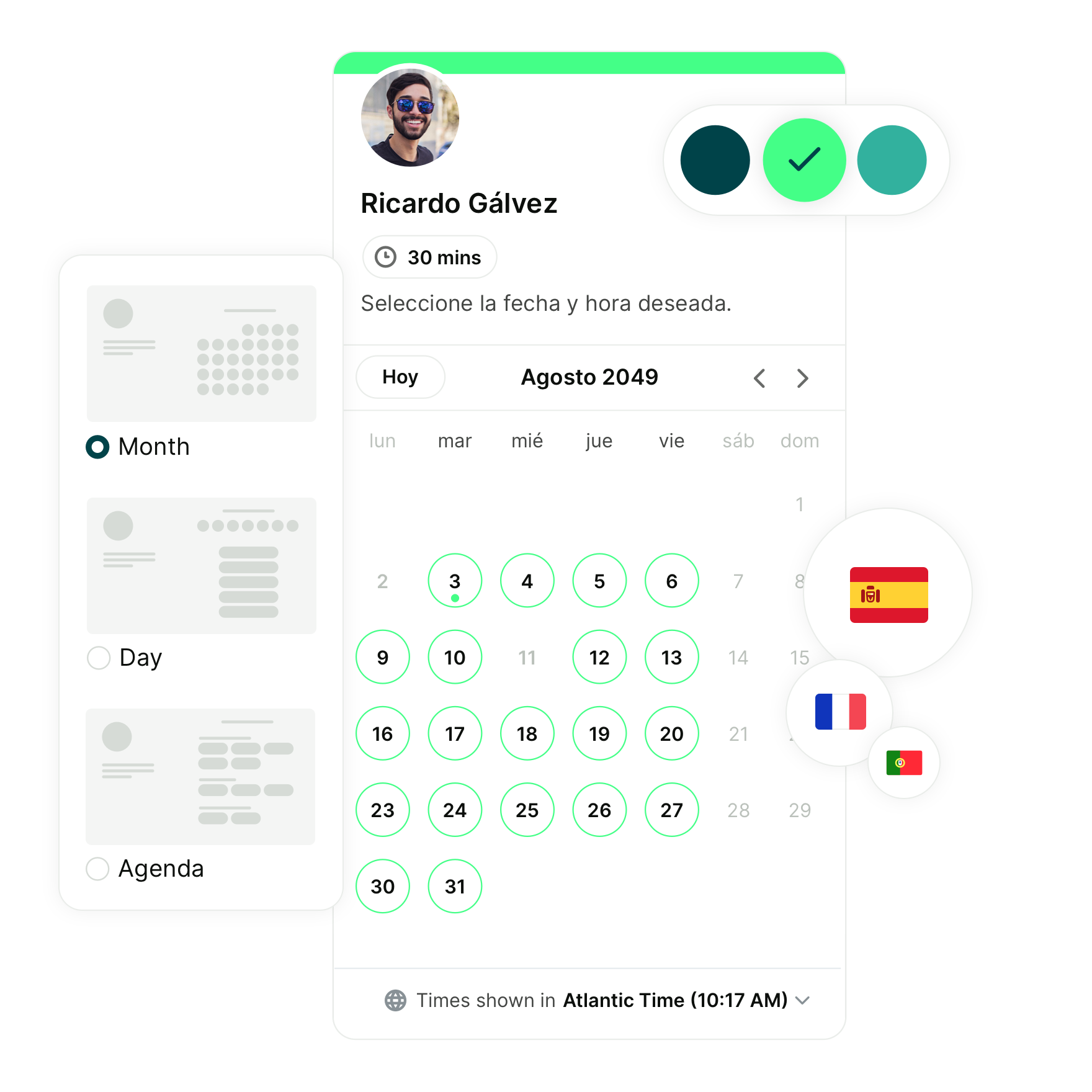Why employees think hybrid schedules won't work, and how to change it
From a lack of networking opportunities and team flow to presenteeism and a distracting remote work environment, there are good reasons why your employees might be skeptical about hybrid working. Alleviate those worries with a few simple changes.

George Newton

Ready to book more meetings?

Thanks to the pandemic, many workers were moved into a work-from-home or hybrid working structure. As we're seeing some improvement to the situation, countless professionals are asking for the hybrid work model to stay.
Seeing as employees working from home rose from 20% to 70% during the pandemic, many have found that they like the benefits of the set up.
However, there are also employees that are on the fence about making a permanent change to the way they work. In fact, they might believe hybrid working won't be feasible in the long run and treat it more as a temporary solution.
But the truth is, a hybrid work schedule can be beneficial to companies. As such, it can help companies tackle various tasks and productivity that require on- and off-site work. It’s important to facilitate hybrid work, so that both in-house and remote employees can work together to keep the business running.
You want to ensure your transition to a hybrid schedule is seamless and is a positive change for your workforce. Therefore, before you implement a hybrid schedule, you need to address the following issues.
Workers feel their work won't be valued
There are many workers that are wary of going hybrid, as when they're at home no one's seeing the effort they're putting in.
There's a lot of power in being in the office and being seen by the higher-ups. For example, consider the phenomenon of 'proximity bias'. This is when those who spend more time with managers are more likely to get promotions. If you're in the office and putting in those hours, then you're more likely to be noticed.
People don't want to be putting in all that work, only for them not to be noticed or appreciated. It actually serves you as a company better to allow for hybrid work, as requiring 100% attendance in the office can lead to presenteeism, and can actually decrease output.
As such, you'll need to be checking in with your staff, and paying attention to what they're doing. Consider having weekly check-ins via video chat. Zoom and Google Meet are great platforms to conduct virtual check-ins with your remote employees.
When you're creating a closer relationship with them this way, you'll keep your finger on the pulse and see who's putting the work in.
Some workers don't have the right remote working environment
This is something that a lot of workers have struggled with during the pandemic.
For those that live in small homes, with roommates, or with families, there just isn't a good space to work. They may have been able to make due during lockdowns, but now they don't want to have to handle extra distractions while they're trying to get on with the job.

You should consider helping these employees create a better remote working environment, as that will help you boost productivity and employee satisfaction. You can provide access to equipment or other tools so they can do the remote work well.
You can additionally set up a stipend for supplies like furniture, utilities, and so on. If your team can make the necessary adjustments to their remote set up, it will give them a fresh perspective on working from home.
It's difficult to network from home
There's no denying that you can't network effectively when you're at home.
“There are video calling tools, like Zoom, that do help,” says HR blogger Elise Johnson, from Write My X and 1 Day 2 Write. “However, they don't really stand in for face-to-face contact.”
Again, workers may feel they're missing out on face-to-face contact with those who can further their career.
If your employees are worried about this, make sure to set a clear schedule of when certain higher-ups and managers will be in the office, and organize networking events and group meetings on that day. You can use an online scheduling tool such as YouCanBook.me to ensure you are choosing a time and date that suits all your employees.
You can also alleviate this concern by setting some equity rules in place. For example, you'll need to think about how to do performance reviews.
Performance reviews can be done on an individual basis, meaning that the review will apply to the employee themselves, not everyone as a whole (unless you do a thorough overall company performance review).
Having a policy in place, and sticking to it, will go a long way.

Issues in creating team flow while remote
When teams are working together on a project, their best work is done during 'team flow'. That's when they're all engaged and bouncing ideas off each other.
This is much more difficult to do at home. “It's harder to see who's not engaged over a Zoom call,” says journalist Aiden Holmes, from Origin Writings and Brit Student. “That makes it harder to get results.”
It's true that it's harder to achieve 'flow' at home, so instead, you can plan around it.
For example, scheduling the team to come into the office to work together, and then scheduling home working when they go to work on their separate parts of the project, can help solve the issue.
Make a hybrid model work for your team
With these tips, you'll be able to assuage any fears about hybrid working that your team may have. You'll need to create new solutions to go with this new work schedule, so don't be afraid to make changes to make it work for you and everyone in the office.
Subscribe to our newsletter
Get productivity tips, news, articles and resources.
Written by
George Newton
George J. Newton is a business manager with Write my Essay and PhD Kingdom. He covers business news and tips on managing work flow. He also writes for Next Coursework.

